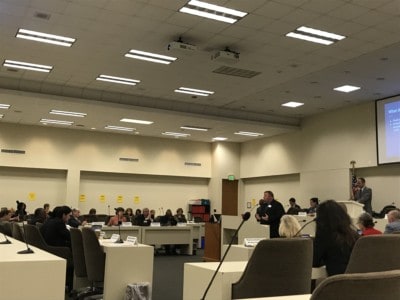

All of the moonlighting jobs came first. Teaching came along later, and I was already so accustomed to them. I cannot imagine life without that. It’s just non-existent. I just felt like working another job was a part of life. I didn’t feel like it was any different. Most everybody that lives around here that works in a factory will also come home and moonlight at a job or they will raise a tobacco crop. If you have time, why not do it? (teacher and hair stylist)
Nobody thought it [moonlighting] was bad at all. It was just like that’s what teachers do, they moonlight. So, if anything, I think people maybe admired me for doing it; they didn’t think badly of me. I wouldn’t think it was bad for anybody else to work another job, especially if you’re the breadwinner in the family; I’m not, I didn’t have to work. (teacher, tutor, and bus driver)
Teachers moonlight. Many teachers moonlight on a continual basis throughout their careers. Others moonlight according to needs, both personal and financial. In the past, numbers have varied because of inconsistencies in what is defined as moonlighting. Is moonlighting the work that teachers do in the summer or does it also include additional work during the school year? Additionally, when teachers assume extra responsibilities during the school year and receive stipends, should that also be considered moonlighting? Blair (published as Hilty, 1987) found that when teachers were asked what constituted moonlighting behavior, all of the above could be included. In her research, teachers suggested that additional compensation for anything beyond their contractual teaching responsibilities should be considered teacher moonlighting. Taking this into account, statistics on teacher moonlighting ranging from 15% (Bobbitt, 1988) to 65% (Wisniewski & Hilty, 1987) have been published. More recently, Blair (published as Hilty, 2008) found that 71% of North Carolina teachers had other sources of income beyond their base teacher salaries. These kinds of statistics have led Gordon and Parham (2011) to claim that “between one-third and two thirds of teachers moonlight, making moonlighting teachers a significant subculture in the profession” (p. 51). Research documenting the prevalence of moonlighting among American teachers dates back to the 1950s and 1960s (Anderson, 1966; Norris & Hecker, 1962; Schiffman, 1963; Smith & Cooper, 1967; Turner, 1962; Yeager, 1956). Regardless of the pattern, this research forms a foundation for the continued study of teacher moonlighting and speculation regarding its impact on the profession. By the end of the 20th century, it could be clearly documented that teacher moonlighting was persistent and was an important part of the culture of teaching.
Researchers have regularly documented the prevalence of teacher moonlighting, and yet public discussions of teacher moonlighting are largely nonexistent. Teachers seem to be most comfortable discussing moonlighting in private settings, where they can share the information with other interested teachers and even recruit these teachers to moonlight, but it is done behind the-scenes, not in public. Is this because they are embarrassed that they need extra income, or is it related to concerns about the appropriateness of the moonlighting jobs? Given the powerlessness and lack of autonomy felt by many teachers, some may fear being reprimanded for having a second job that might be perceived as interfering with their primary teaching responsibilities. Recently, I was on Facebook and stumbled upon @eddiebcomedy, who has a following on social media. What (teachers) really say about what they get paid! pt.1 (@eddiebcomedy, 2017) had @eddiebcomedy ranting about teacher salaries. He stated that “it’s a shame that every teacher I know gotta have a side hustle.” His examples of side jobs included the following: teach, do hair, bake cakes, bake cookies, sell insurance and Uber. Interesting that he would reference Uber, since teachers, as a group, are targeted by Uber as prime potential employees (Quart, 2016, para. 4).
….Research also indicates that some teachers work as bartenders, strippers and even as porn movie stars in settings that might cause some concern from those who believe that teachers should be held to higher moral standards because of the important work they do with young impressionable children (“California teacher fired for moonlighting as porn star fighting to get her job back,” 2012; “Teacher reprimanded for moonlighting as stripper,” 2011; Kronen, 2018). A search through popular media sites reveals numerous references to teachers who have chosen to moonlight in unconventional jobs and faced the scrutiny of punitive school boards. And yet, these kinds of issues represent one facet of the “dark side” of teachers’ work. Moonlighting is a part of teachers’ work, and as such, it occurs in myriad contexts and conditions that may or may not be related to education. Unfortunately, there are times when these “side hustles” are not jobs that encompass roles that are congruent with our expectations for a person who is simultaneously a teacher and a role model for children.
….In one sense, teacher moonlighting is like an iceberg, a large floating mass seemingly detached from other educational issues and concerns, and like an iceberg, the part below the surface is much larger than the part that is visible above surface. More importantly, like an iceberg, the connections we can’t see, the things we don’t know, can hurt us. We all know about teacher moonlighting, since it is visible and acknowledged by teachers and researchers alike, and yet, the larger, more complex issues related to teacher moonlighting are largely unseen and frequently ignored. Educational anthropologists George and Louise Spindler (1982) frequently referred to the idea of “making the familiar strange and the strange familiar.” Moonlighting is so familiar to teachers that we don’t recognize that the high levels of moonlighting among educators are a very strange phenomenon. Attempts to study moonlighting have often failed from attempts to make what is commonplace appear worthy of serious consideration by policymakers, researchers, or members of the profession. The essays in this book are an attempt to pull together in one place the most significant work that has been done on teacher moonlighting and to provide a context for further investigation and speculation regarding a phenomenon that has been frequently studied, but seldom understood.
References
@eddiebcomedy. (2017, November 16). What (teachers) really say about what they get paid! pt.1, Retrieved from https://www.youtube.com/watch?v=vi3r3LK0Dxo&list=RDvi3r3LK0Dxo&t=2
Anderson, W.D., Jr. (1966). Supplemental income survey: Oklahoma classroom teachers and counselors K–12 (doctoral dissertation). The University of Oklahoma, Norman, Oklahoma.
Bobbitt, S. A. (1988). Moonlighting among public school teachers: Survey report (No. CS-89119). Washington, DC: National Center for Education Statistics.
California teacher fired for moonlighting as porn star fighting to get her job back. (2012, October 23). NY Daily News. Retrieved from http://www.nydailynews.com/ news/national/porno-teach-fighting-job-article-1.1190928
Hilty, E. B. (1987). Moonlighting teachers: A thematic analysis of personal meanings (doctoral dissertation). The University of Tennessee, Knoxville, Tennessee.
Hilty, E. B. (2008). Teacher moonlighting in North Carolina: Implications for the profession. Paper presented at the North Carolina Association for Research in Education Conference, North Bern, NC.
Kronen, C. (2018). I’m a sinner, I’m a saint: A teacher’s perspective on moonlighting in the nightlife industry. In Blair, E. (Ed.), By the light of the silvery moon: Teacher moonlighting and the dark side of teachers’ work. Gorham, ME: Myers Education Press.
Norris, W., & Hecker, S. E. (1962). Are Michigan educators moonlighters? Michigan Education Journal, 39, 559–61.
Parham, J. N., & Gordon, S. P. (2011). Moonlighting: A harsh reality for many teachers. Phi Delta Kappan, 92(5), 47–51.
Quart, A. (2016). Teachers are working for Uber just to keep a foothold in the middle- class. The Nation. Retrieved from https://www.thenation.com/article/teachers-areworking-for-uber-just-to-keep-a-foothold-in-the-middle-class/
Schiffman, J. (1963). Multiple jobholders in May 1962. Monthly Labor Review, 86, 516–23.
Smith, D. M., & Cooper, B. (1967). A study of moonlighting by public school teachers. American Educational Research Journal, 4(1), 51–58.
Spindler, G., & Spindler, L. (1982). Roger Harker and Schöenhausen: From familiar to strange and back again. In G. Spindler (Ed.), Doing the ethnography of schooling: Educational anthropology in action (pp. 20–46). New York, NY: Holt, Rinehart, and Winston.
Teacher reprimanded for moonlighting as stripper. (2011, August 31). Independent. Retrieved from http://www.independent.co.uk/news/education/education-news/ teacher-reprimanded-for-moonlighting-as-stripper-2347021.html
Turner, E. (1962). Moonlight over the chalkboard. National Education Association Journal, 51, 29–30.
Wisniewski, R., & Hilty, E. B. (1987). Moonlighting: An education tradition we could do without. Tennessee Teacher, 30, 8–11.
Wisniewski, R., & Kleine, P. (1984). Teacher moonlighting: An unstudied phenomenon. Phi Delta Kappan, 65(8), 553–55.
Yeager, W. A. (1956). Teaching is still a part-time profession. The Nation’s Schools, 57, 61–62.




